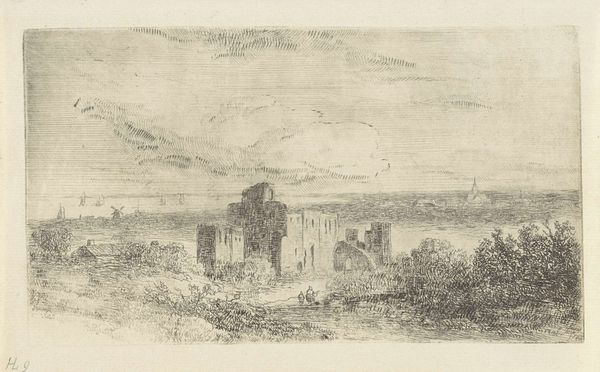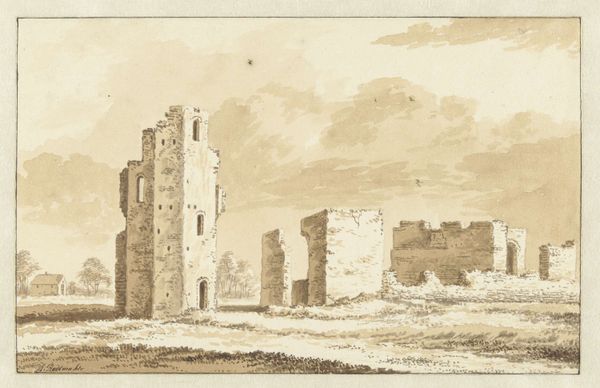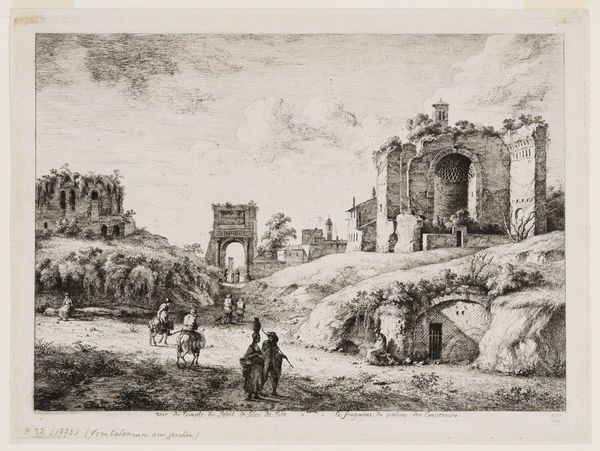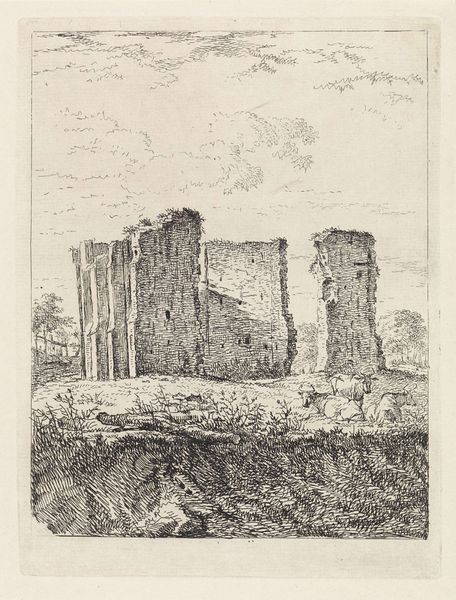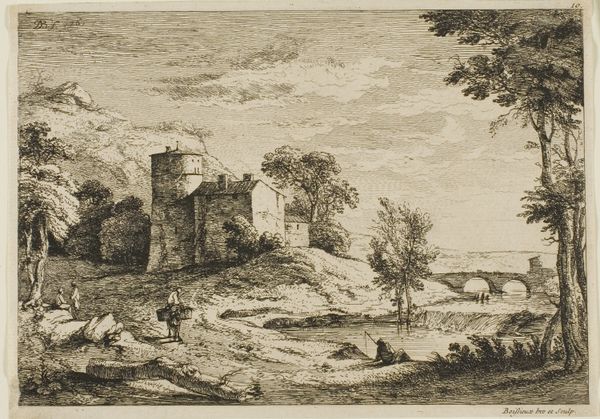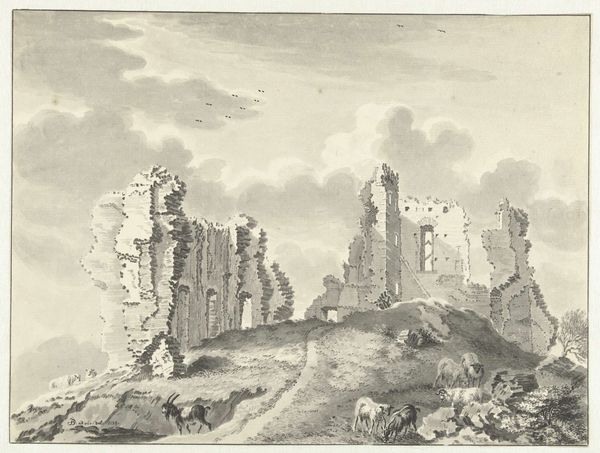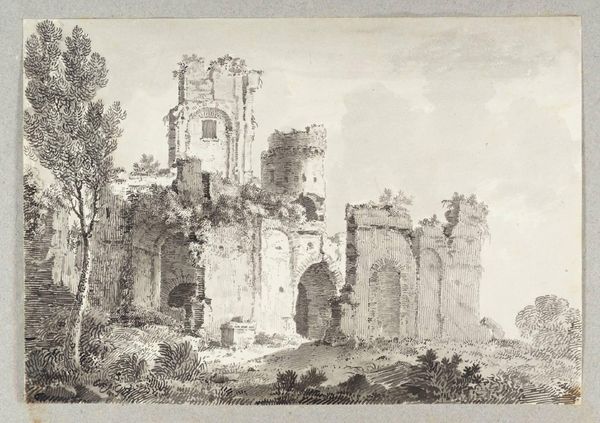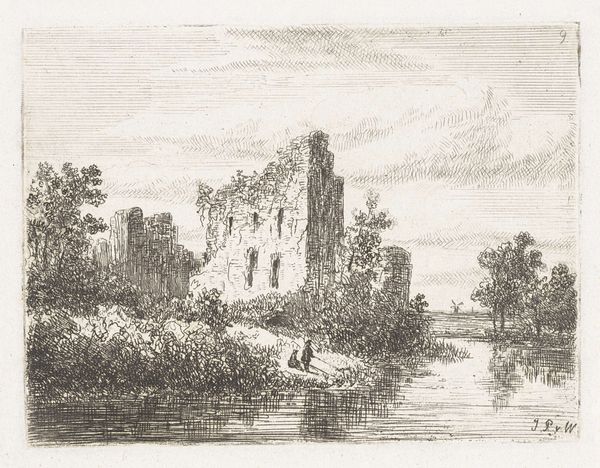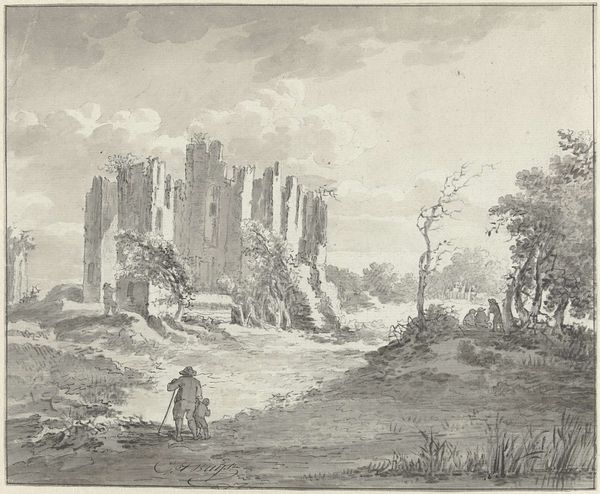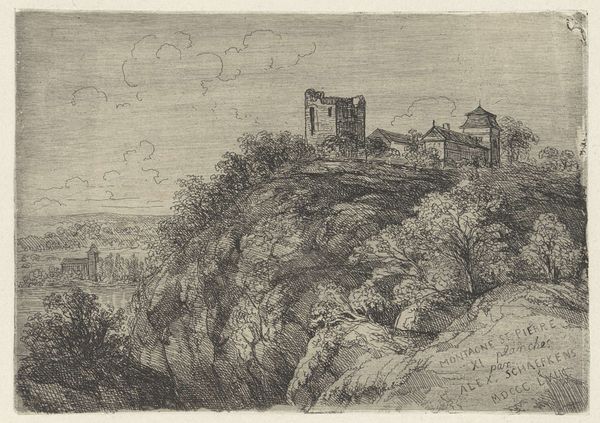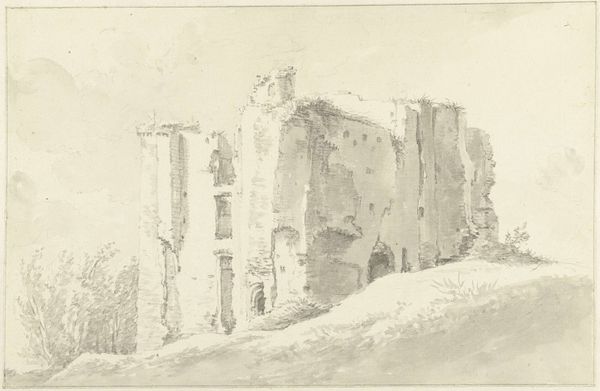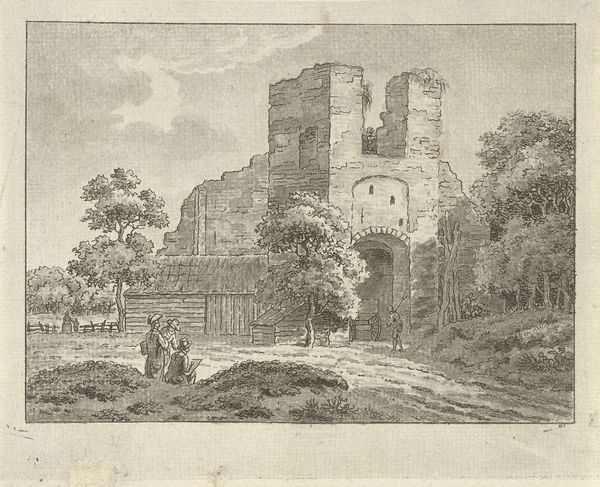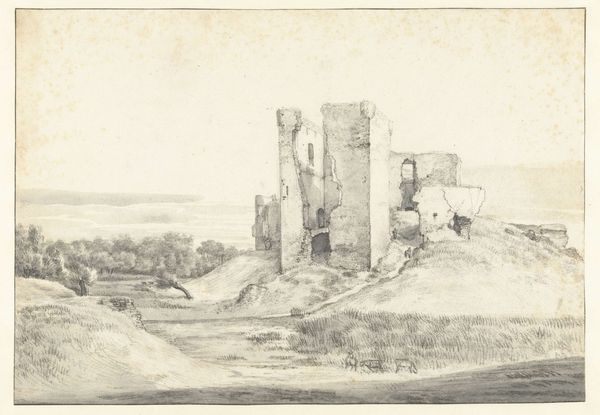
print, etching
# print
#
etching
#
landscape
#
cityscape
#
history-painting
#
realism
Dimensions: height 102 mm, width 180 mm
Copyright: Rijks Museum: Open Domain
Curator: This is "Coastal Landscape with Ruin," an etching made by Johannes Pieter van Wisselingh sometime between 1830 and 1878, now housed here at the Rijksmuseum. Editor: There’s a kind of forlorn beauty to this print. The stark lines and pale tones create a real sense of isolation around those ruins. It looks like it was made rather hastily; I'd venture to suggest the artist prioritised speed. Curator: I would not say hastily, it is true it seems efficiently produced but that should be considered with relation to market forces that were dictating a growing taste for rapidly disseminated images of Dutch landscape and history. Editor: Good point. It begs the question, how much of the realism indicated is to do with the subject itself? Or, alternatively, does its realistic aesthetic mask a constructed, possibly ideologically-driven depiction of landscape that references back to former powers? Curator: It’s fascinating to consider how those ruined structures represent the decline of past societal projects. Etchings like this served as accessible mediums, offering glimpses into idealized, or romanticized, histories accessible to wider audiences than painted works on canvas might achieve, changing perceptions of what artwork can and should offer to a populace, as an object and an idea. Editor: Right, because the printing process democratized access, meaning we're not just considering artistic expression, but the mechanics of its dissemination and the societal impact. We see this blending of realism with elements of history painting. Curator: And we can speculate as to who precisely this imagery was geared toward— the type of person who may be eager to see national emblems past their zenith... Editor: It's sobering to think about the work's life extending far beyond its creation. Its material essence, in essence, is a container for a continuing, mutable story that mirrors the socio-cultural trends influencing perception over time. Curator: This work shows a view into the complex interaction that exists between landscape, production and the dissemination of powerful visuals. Editor: The power of simple means. It truly conveys the lasting impact of cultural artifacts, no matter their humble origin.
Comments
No comments
Be the first to comment and join the conversation on the ultimate creative platform.
